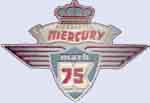No. 5250 is a constant, it does not change, when the rpm is 5250 and divided by 5250 the torque is the same as the hp. This applies to all engine, there are no exceptions! The torque peak is another thing, it can peak anywhere in the power cure. It can peak at 10000 rpm or 514 rpm, its just at 5250 rpm the torque and the hp will be the same Thats my .02


 Thanks:
Thanks:  Likes:
Likes: 


 Reply With Quote
Reply With Quote






Bookmarks